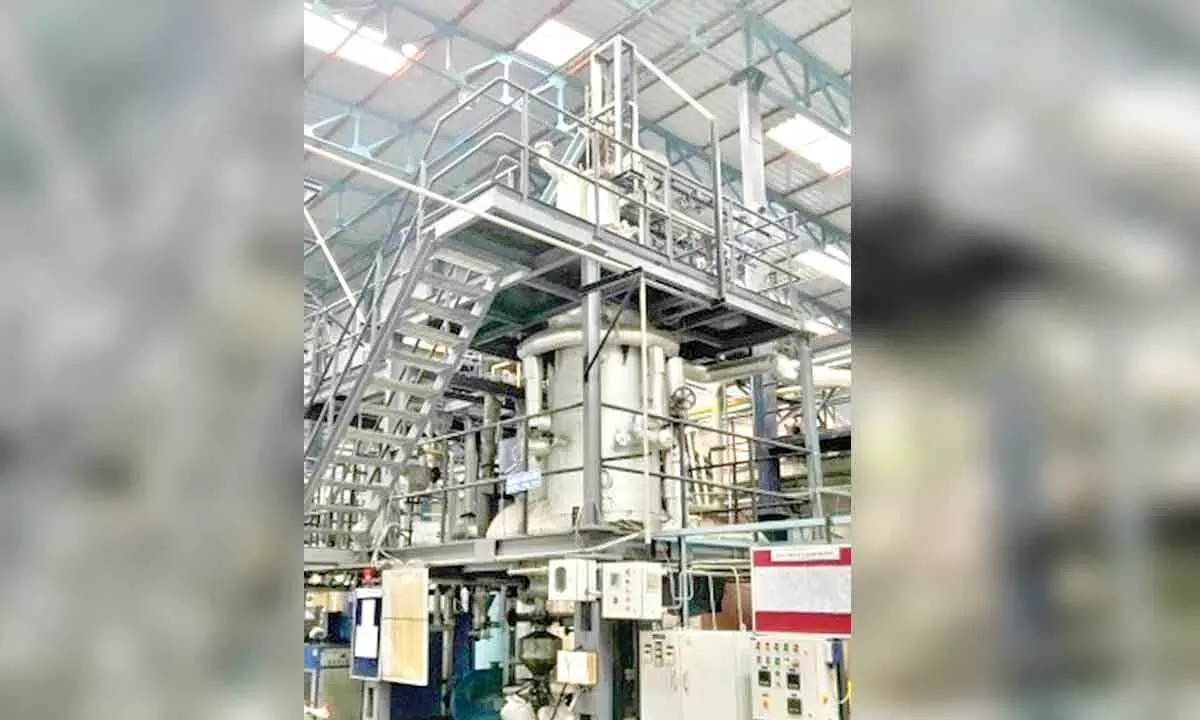Live
- All you need to know about PAN 2.0
- Akasa Air redefines travel experience with industry-first offerings
- MP: Residents stage protests against liquor shop in Indore
- Telugu Actor Shri Tej Booked for Alleged Cheating and False Promise of Marriage in Live-in Relationship
- Toyota Kirloskar Motor Celebrates 1 Lakh Urban Cruiser Hyryder on Indian Road
- MLS: New York City FC part ways with head coach Nick Cushing
- Delhi CM says Centre cutting AAP voters’ names from rolls, BJP hits back
- Hyderabad Metro Rail Phase-II Works to Begin in Old City in January 2025
- Odisha: 668 persons killed in human-elephant conflicts in last three years
- DEFENDER JOURNEYS: TO EMBARK ON ITS THIRD EDITION FROM NOVEMBER 2024
Just In
IISc team develops tech for generating hydrogen from biomass


Paving the way for an abundant renewable energy source, researchers at the Indian Institute of Science (IISc) have developed an innovative technology that can produce hydrogen from biomass.
Bengaluru: Paving the way for an abundant renewable energy source, researchers at the Indian Institute of Science (IISc) have developed an innovative technology that can produce hydrogen from biomass. The team was led by S. Dasappa, Professor at the Centre for Sustainable Technologies, and Chair of the Interdisciplinary Centre for Energy Research at IISc.
India uses nearly 50 lakh tonnes of hydrogen for various processes in different sectors, and the hydrogen market is expected to grow substantially in the coming years, says Dasappa.
"But most of the hydrogen we currently use comes from fossil fuels through a process called steam methane reforming route.a Now, his team has found a way to extract green hydrogen from biomass, a renewable energy source, an IISc statement noted.
The process consists of two steps. In the first step, biomass is converted into syngas - a hydrogen-rich fuel gas mixture - in a novel reactor using oxygen and steam. In the second step, pure hydrogen is generated from syngas using an indigenously developed low-pressure gas separation unit.
Both these technologies, developed in Dasappa's lab, ensure that this process is a highly efficient method of generating green hydrogen -- it produces 100 g of hydrogen from 1 kg of biomass even though only 60 g of hydrogen are present in 1 kg of biomass.
This is because in this process, steam, which also contains hydrogen, participates in both homogeneous and heterogeneous reactions (in homogeneous reactions, reactants are in a single phase whereas in heterogeneous reactions, the reactants are in two or more phases).
The production of green hydrogen using this process is environmentally friendly for another reason -- it is carbon negative. The two carbon-based by-products are solid carbon, which serves as a carbon sink, and carbon dioxide, which can be used in other value-added products.
"This indigenous technology is a step towards achieving the goal of Atmanirbhar Bharat of the Honourable Prime Minister," says Dasappa.
The technology also dovetails nicely with the National Hydrogen Energy Roadmap, an initiative of the Government of India that aims to promote the use of hydrogen as a fuel and reduce dependence on fossil fuels, he adds.
The project was supported by the Ministry of New and Renewable Energy and the Department of Science and Technology of the Government of India.
The team also acknowledges the support of the Indian Oil Corporation Limited in scaling up the technology to produce 0.25 tonnes of hydrogen per day for use in hydrogen-powered fuel cell buses.
Dasappa believes that green hydrogen could be used in several other industries as well - in the steel industry to decarbonise steel, in agriculture to manufacture green fertilisers, and in many sectors currently using hydrogen produced from fossil fuels.

© 2024 Hyderabad Media House Limited/The Hans India. All rights reserved. Powered by hocalwire.com






